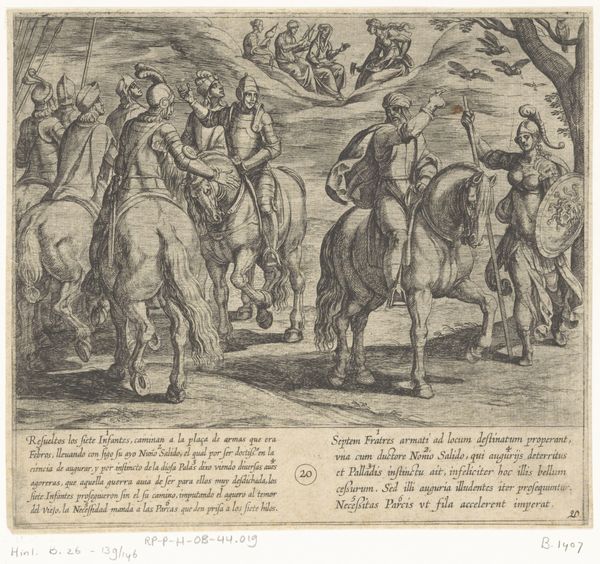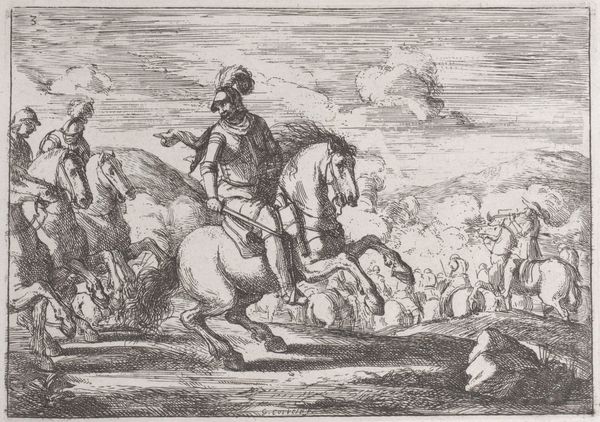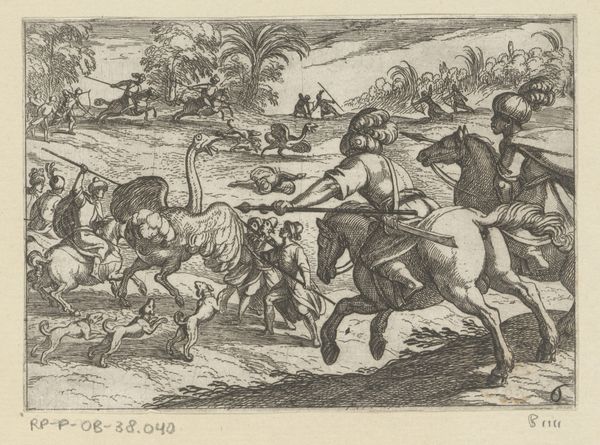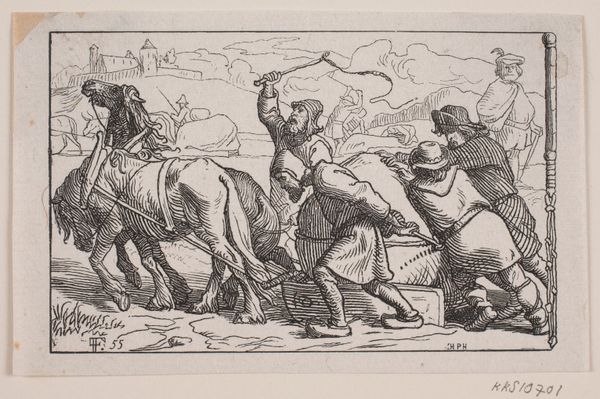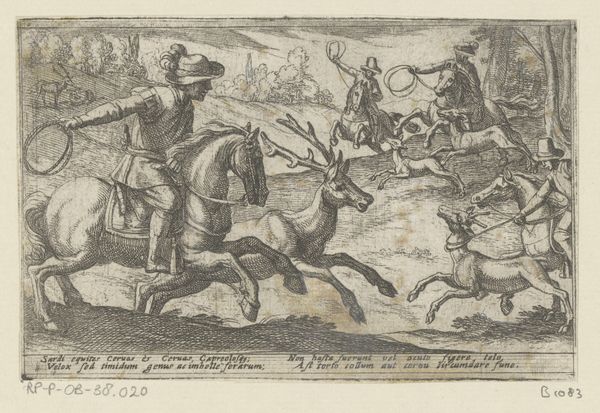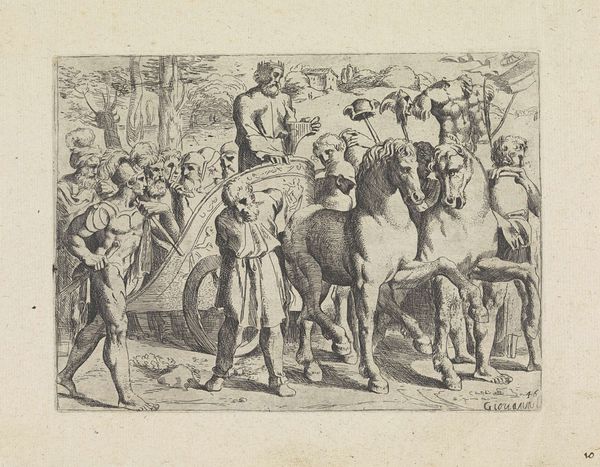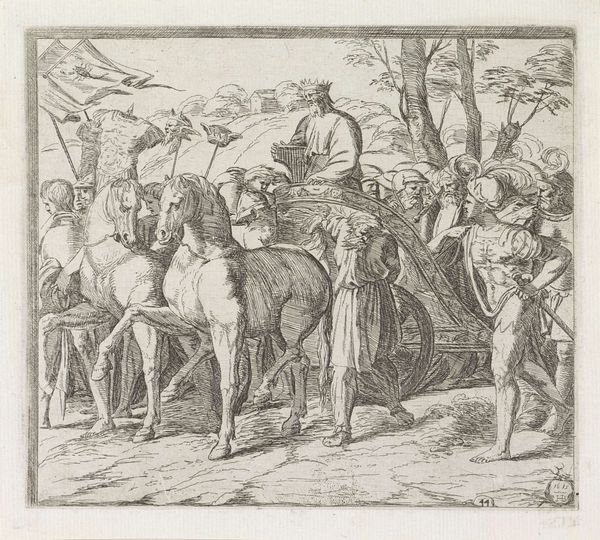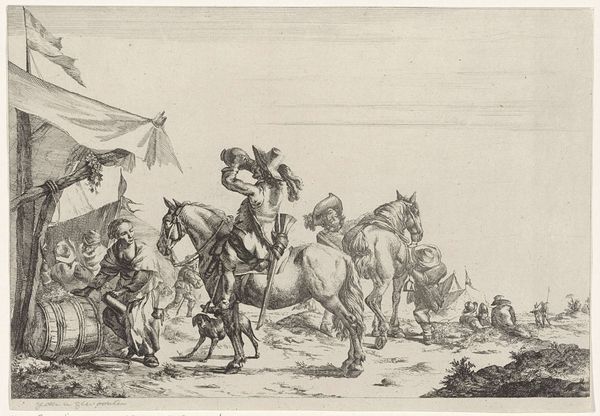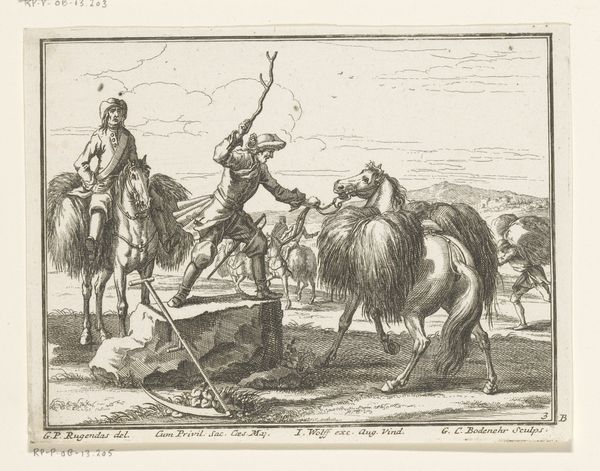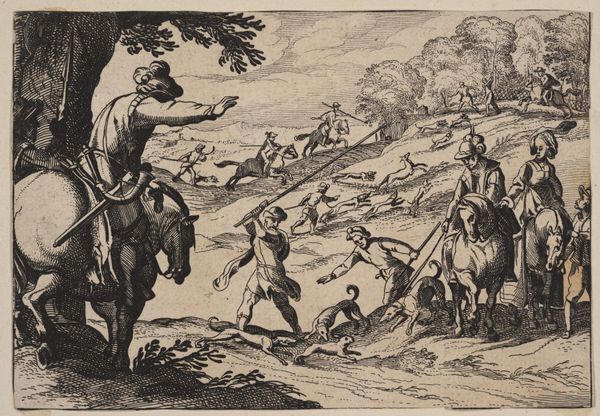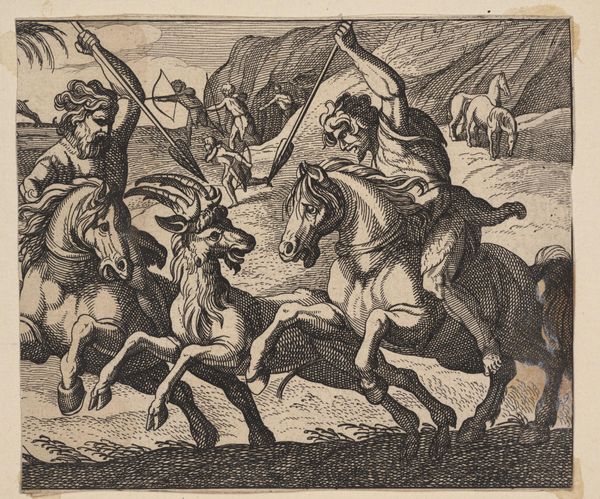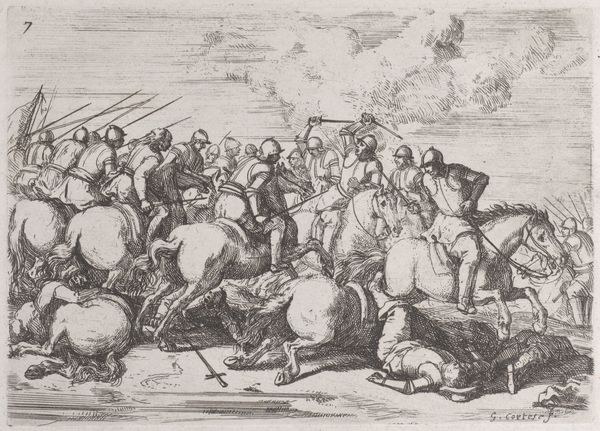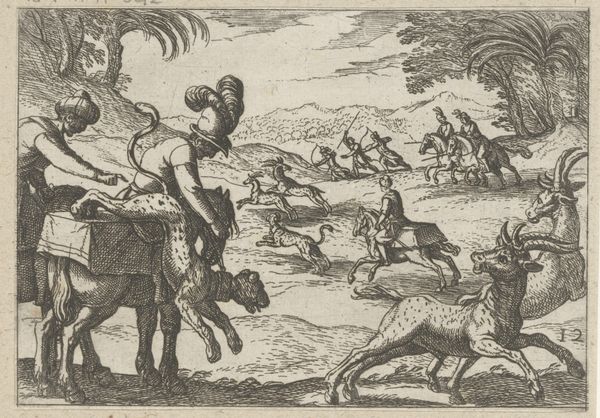
Plate 4: the rescuing of dead and wounded soldiers 1635 - 1660
0:00
0:00
drawing, print, etching
#
drawing
#
narrative-art
#
baroque
# print
#
etching
#
landscape
#
figuration
#
history-painting
Dimensions: Plate: 4 1/2 × 6 3/8 in. (11.4 × 16.2 cm) Sheet: 7 5/16 × 9 5/8 in. (18.5 × 24.4 cm)
Copyright: Public Domain
Curator: Today, we’re examining “Plate 4: The Rescuing of Dead and Wounded Soldiers” by Jacques Courtois, created sometime between 1635 and 1660. It’s an etching, currently held at the Metropolitan Museum of Art. My initial response to this is... chaos, but controlled chaos. The lines are so dense, the scene so full of figures, it feels overwhelming. Yet, there's a strange beauty to the composition. Editor: Indeed, Courtois gives us much to unpack here. I think what you perceive as “chaos” is indicative of the realities of war—it’s rarely clean or simple. Note how Courtois places the scene in a broad landscape—emphasizing not just the event of rescuing, but the social and physical world in which violence operates, revealing broader implications regarding the lives and identities of soldiers beyond just combat. Curator: The etching technique lends itself to that, doesn't it? That frenetic energy conveyed through all those cross-hatched lines... It creates a tangible sense of urgency and even…grime. Editor: The artist really highlights the visual language of Baroque. How does this visual strategy work to uphold, perhaps even critique, power structures prevalent in 17th-century military endeavors? The print also asks about social responsibility: Who rescues whom and what narratives do we tell about these actions? Curator: I can certainly see the undercurrents of your interpretation; to my eye the contrast seems somewhat romanticized despite its grim subject matter, perhaps that reading speaks to a desire to find heroism within such scenes of horror. Observe the heroic gesture of those aiding the wounded – Courtois seems to highlight both the fragility of life and resilience amidst destruction. The very act of rescuing emphasizes inherent social and class-based imbalances during that era too. Editor: The work raises such poignant questions about violence, history, and, crucially, human empathy. Curator: It’s true – regardless of perspective it stays with you. An experience more poignant than a heroic painting, perhaps? Editor: It offers something essential, reminding us of the stories and historical conditions we often overlook in larger narratives of warfare.
Comments
No comments
Be the first to comment and join the conversation on the ultimate creative platform.
